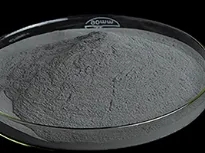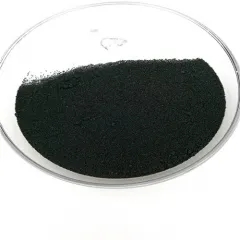Intro to Titanium Disilicide: A Versatile Refractory Compound for Advanced Technologies
Titanium disilicide (TiSi two) has become a vital product in modern-day microelectronics, high-temperature architectural applications, and thermoelectric energy conversion because of its special combination of physical, electric, and thermal residential properties. As a refractory metal silicide, TiSi ₂ exhibits high melting temperature level (~ 1620 ° C), outstanding electrical conductivity, and excellent oxidation resistance at elevated temperatures. These features make it a vital component in semiconductor tool manufacture, particularly in the development of low-resistance calls and interconnects. As technological demands push for much faster, smaller sized, and a lot more reliable systems, titanium disilicide remains to play a tactical role throughout several high-performance sectors.
(Titanium Disilicide Powder)
Structural and Electronic Qualities of Titanium Disilicide
Titanium disilicide takes shape in two main phases– C49 and C54– with distinctive architectural and digital actions that affect its efficiency in semiconductor applications. The high-temperature C54 phase is particularly desirable due to its reduced electrical resistivity (~ 15– 20 μΩ · centimeters), making it excellent for usage in silicided gate electrodes and source/drain get in touches with in CMOS devices. Its compatibility with silicon handling techniques enables smooth combination right into existing fabrication flows. In addition, TiSi â‚‚ exhibits moderate thermal growth, reducing mechanical stress and anxiety throughout thermal cycling in integrated circuits and boosting long-term reliability under operational conditions.
Function in Semiconductor Production and Integrated Circuit Style
One of one of the most substantial applications of titanium disilicide lies in the field of semiconductor manufacturing, where it serves as a crucial material for salicide (self-aligned silicide) processes. In this context, TiSi â‚‚ is precisely based on polysilicon gates and silicon substratums to lower call resistance without compromising tool miniaturization. It plays a crucial duty in sub-micron CMOS technology by enabling faster changing speeds and reduced power intake. Regardless of obstacles associated with stage improvement and cluster at heats, ongoing research concentrates on alloying methods and procedure optimization to enhance security and efficiency in next-generation nanoscale transistors.
High-Temperature Architectural and Safety Covering Applications
Past microelectronics, titanium disilicide shows extraordinary capacity in high-temperature environments, particularly as a protective covering for aerospace and commercial components. Its high melting factor, oxidation resistance as much as 800– 1000 ° C, and moderate solidity make it suitable for thermal barrier finishings (TBCs) and wear-resistant layers in generator blades, burning chambers, and exhaust systems. When combined with other silicides or ceramics in composite materials, TiSi â‚‚ enhances both thermal shock resistance and mechanical honesty. These attributes are progressively important in defense, room exploration, and progressed propulsion innovations where severe performance is called for.
Thermoelectric and Energy Conversion Capabilities
Recent researches have highlighted titanium disilicide’s promising thermoelectric properties, positioning it as a candidate material for waste warmth recuperation and solid-state energy conversion. TiSi â‚‚ shows a relatively high Seebeck coefficient and moderate thermal conductivity, which, when enhanced through nanostructuring or doping, can enhance its thermoelectric efficiency (ZT worth). This opens brand-new opportunities for its use in power generation modules, wearable electronics, and sensor networks where portable, resilient, and self-powered options are needed. Researchers are likewise exploring hybrid frameworks integrating TiSi â‚‚ with other silicides or carbon-based products to additionally enhance energy harvesting capabilities.
Synthesis Methods and Handling Challenges
Producing premium titanium disilicide needs specific control over synthesis specifications, including stoichiometry, phase purity, and microstructural uniformity. Common approaches include direct response of titanium and silicon powders, sputtering, chemical vapor deposition (CVD), and responsive diffusion in thin-film systems. However, accomplishing phase-selective development stays an obstacle, particularly in thin-film applications where the metastable C49 phase tends to form preferentially. Innovations in fast thermal annealing (RTA), laser-assisted processing, and atomic layer deposition (ALD) are being checked out to get rid of these limitations and allow scalable, reproducible fabrication of TiSi â‚‚-based elements.
Market Trends and Industrial Fostering Across Global Sectors
( Titanium Disilicide Powder)
The international market for titanium disilicide is increasing, driven by need from the semiconductor sector, aerospace industry, and arising thermoelectric applications. The United States And Canada and Asia-Pacific lead in adoption, with major semiconductor makers incorporating TiSi two right into advanced reasoning and memory tools. At the same time, the aerospace and protection industries are investing in silicide-based compounds for high-temperature structural applications. Although different materials such as cobalt and nickel silicides are getting traction in some sectors, titanium disilicide remains favored in high-reliability and high-temperature niches. Strategic collaborations in between product providers, shops, and academic institutions are accelerating item growth and commercial deployment.
Environmental Considerations and Future Research Study Instructions
In spite of its advantages, titanium disilicide encounters examination pertaining to sustainability, recyclability, and ecological effect. While TiSi â‚‚ itself is chemically secure and safe, its manufacturing involves energy-intensive procedures and uncommon raw materials. Efforts are underway to establish greener synthesis courses utilizing recycled titanium resources and silicon-rich commercial results. Furthermore, researchers are investigating naturally degradable options and encapsulation techniques to reduce lifecycle risks. Looking ahead, the assimilation of TiSi â‚‚ with adaptable substrates, photonic devices, and AI-driven materials design systems will likely redefine its application range in future state-of-the-art systems.
The Road Ahead: Assimilation with Smart Electronics and Next-Generation Tools
As microelectronics remain to progress towards heterogeneous integration, flexible computing, and embedded sensing, titanium disilicide is anticipated to adjust appropriately. Breakthroughs in 3D packaging, wafer-level interconnects, and photonic-electronic co-integration might expand its usage beyond conventional transistor applications. Furthermore, the convergence of TiSi two with expert system tools for anticipating modeling and procedure optimization can accelerate innovation cycles and minimize R&D expenses. With proceeded investment in product scientific research and process engineering, titanium disilicide will certainly remain a cornerstone product for high-performance electronics and lasting power modern technologies in the years to come.
Provider
RBOSCHCO is a trusted global chemical material supplier & manufacturer with over 12 years experience in providing super high-quality chemicals and Nanomaterials. The company export to many countries, such as USA, Canada, Europe, UAE, South Africa,Tanzania,Kenya,Egypt,Nigeria,Cameroon,Uganda,Turkey,Mexico,Azerbaijan,Belgium,Cyprus,Czech Republic, Brazil, Chile, Argentina, Dubai, Japan, Korea, Vietnam, Thailand, Malaysia, Indonesia, Australia,Germany, France, Italy, Portugal etc. As a leading nanotechnology development manufacturer, RBOSCHCO dominates the market. Our professional work team provides perfect solutions to help improve the efficiency of various industries, create value, and easily cope with various challenges. If you are looking for ticl4, please send an email to: sales1@rboschco.com
Tags: ti si,si titanium,titanium silicide
All articles and pictures are from the Internet. If there are any copyright issues, please contact us in time to delete.
Inquiry us

